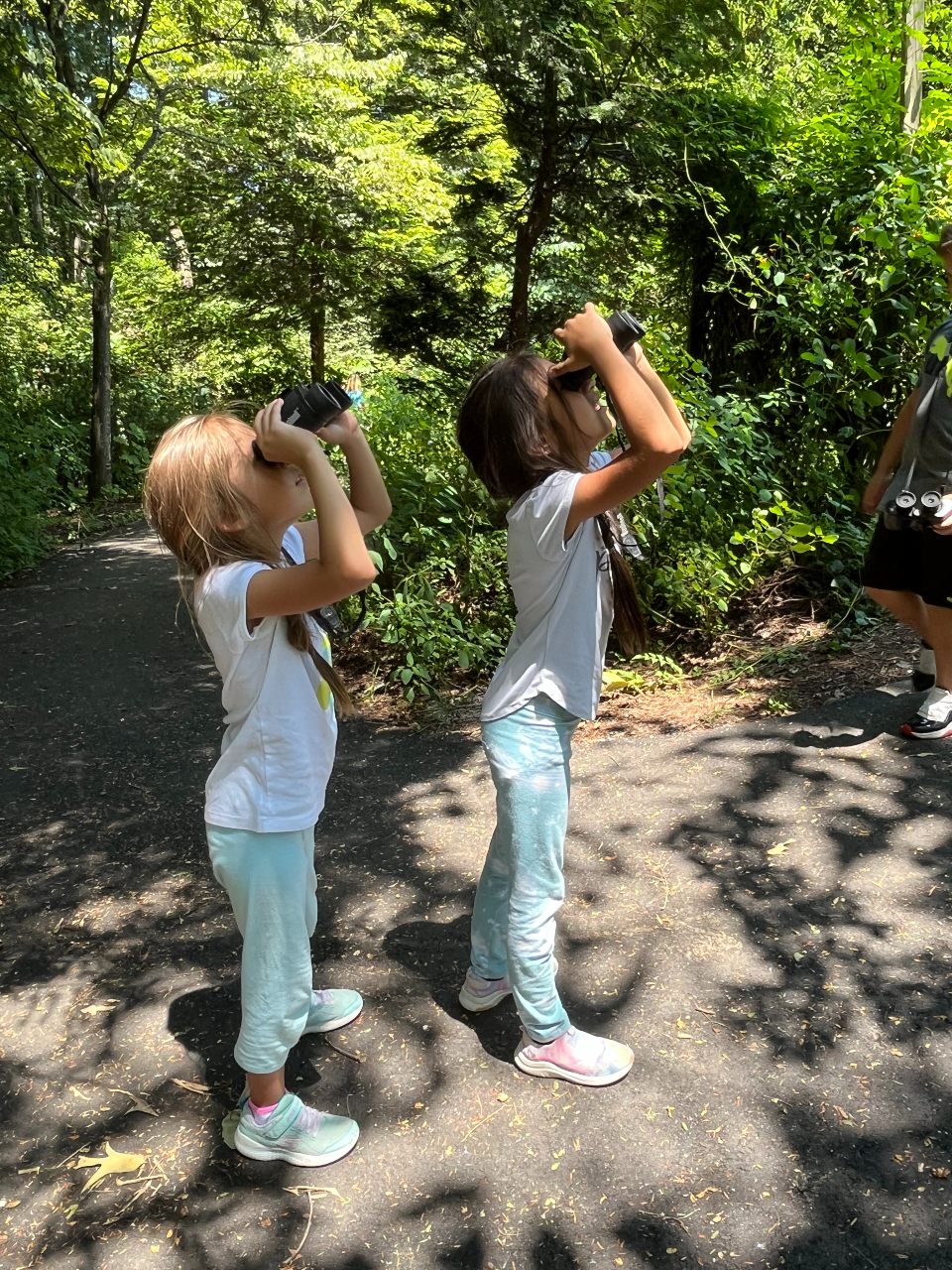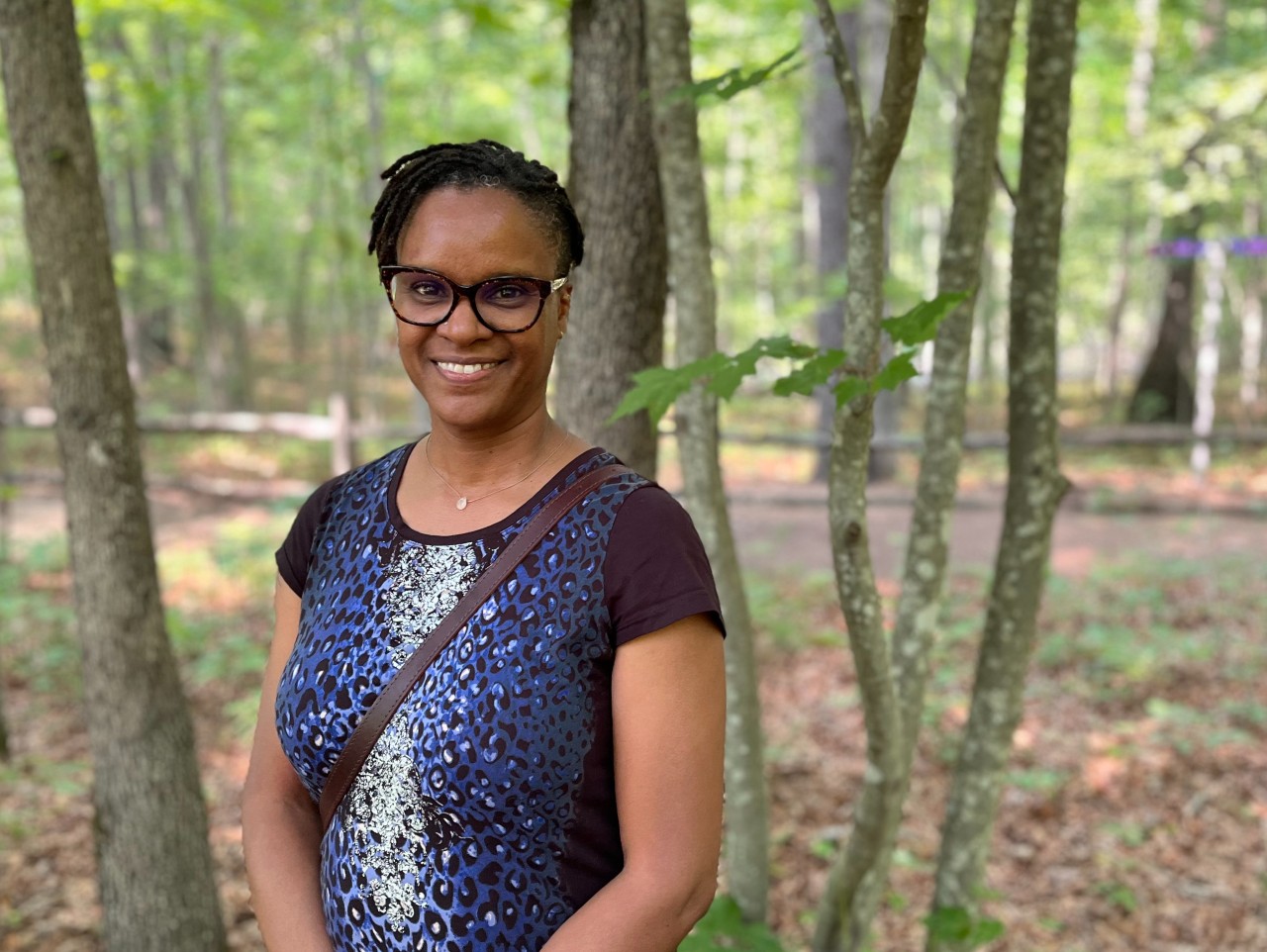Back on Her Grandparents’ Porch
Mindful birding offers connection and calm, for kids and adults.
By Rose Jenkins Lane
When LaShanda Brown started leading mindful birding activities, she wouldn’t have called herself a birder. “At the time I could name maybe two birds. And I’m still only at maybe ten,” she says, laughing.
Her background was as a yoga teacher, as well as a nurse practitioner. That led an avid birder who ran a wellness center to ask if she’d be interested in co-leading mindful birding. As LaShanda started to learn about the practice, it reminded her of spending time with her grandparents on their porch.
She says, “Mindful birding is different from the other types of birding that can get very focused and driven—like, I got to see all the birds, I got to count them up, and I get an award for knowing the most. It can get almost competitive, like a sport. Whereas mindful birding is like, Sit still, let nature come to you.”

LaShanda, who lived almost her whole life in Winston-Salem before moving to Asheville last year, comes from a large, close-knit family.
“I spent a lot of time with my grandparents,” she says. “Mindful birding took me back to those days because that’s what grandparents do. They sit and they watch the world and they let the world come to them. So, it was familiar to me, this idea of just sitting under a tree, on a porch, or in a chair, and noticing what’s around you. When there’s no distractions like TV and the phone ringing, it’s amazing how much you take in around you. So, I was just instantly hooked. I’m like, ‘Yeah. This is it. This is the thing.’”
Now, LaShanda is exploring how she can offer mindful birding in her new home—a venture that began in a park in Brevard with scholars from the Rise & Shine after-school program, in partnership with Conserving Carolina.
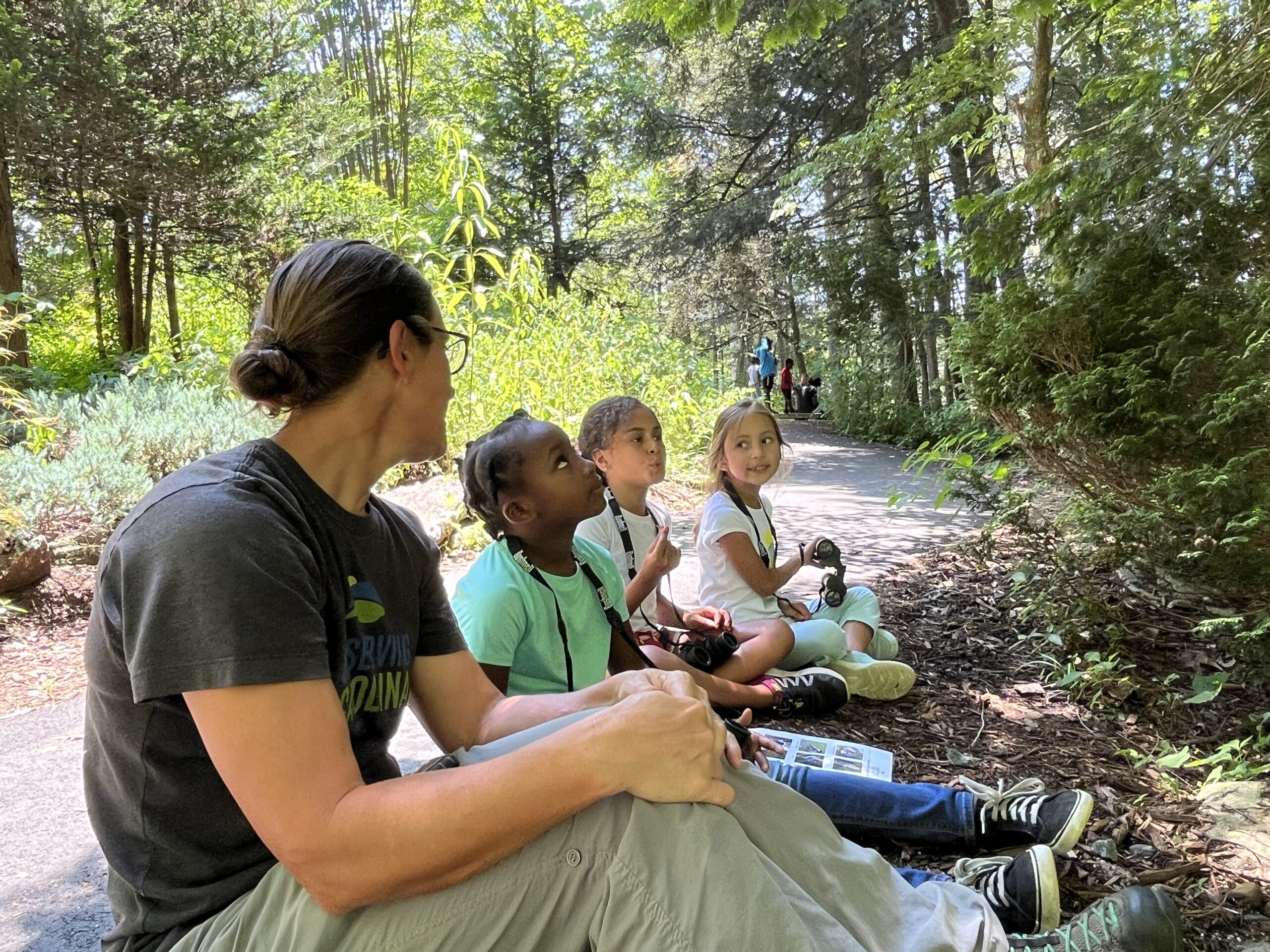
Syncing with the Life Around You
Although her roots go deep in her hometown, LaShanda was always drawn outward, to new places. When she was raising her two kids, her compromise was that she would live in Winston-Salem, but travel when she could.
Then her youngest moved out. “I was like, my kids are grown now, I get to prioritize my needs,” she says. “So, I rebelled and ran away from home.”
She says, “The mountains have always given me this sense that this world is bigger than me. When you can see the earth rise up around you, it just feels like there’s infinite possibilities.”

LaShanda took a job at MAHEC as a psychiatric nurse practitioner, working with older patients. It’s a demanding job, but she’s still interested in guiding mindful birding. “I’m the type of person that needs life and activities outside of work,” she says. “I’ve always been really engaged with community.”
LaShanda first offered birding through the 18 Springs Community Healing Center in Winston-Salem, which describes itself as “a healing space that centers social justice.” 18 Springs aspires to inclusivity and involves healers and participants that you might not see at your average yoga class, massage studio, or nature walk.
Today, LaShanda says she’s most interested in working with groups that aren’t at the center of mainstream outdoor recreation culture—like children, seniors, and people of color.
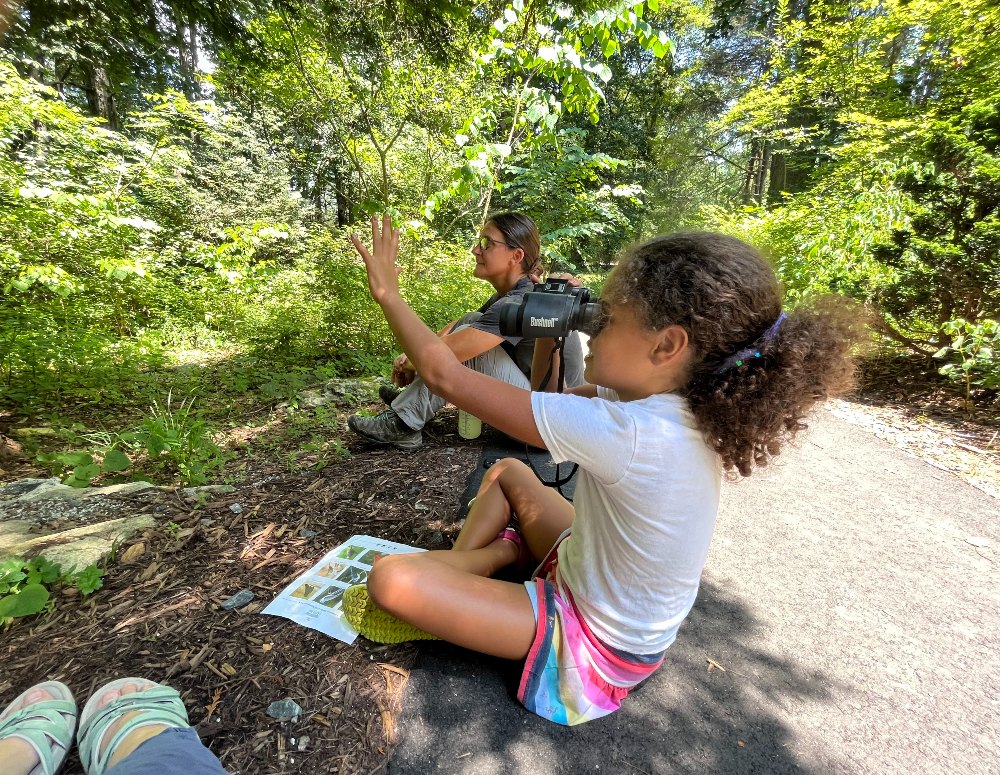
She says, “In my community, the Black community, we have shied away from a lot of outdoor activities. We aren’t naturally seeking out hiking or kayaking or those kinds of outdoorsy things. And I know how good it is for us to be out in Nature. It also makes me sad because my generation, as children, we were outside playing. Now, for a lot of different reasons, outside isn’t always safe. So, people kind of hunker down inside. It’s shifted the way we engage with the world.”
When LaShanda first encountered mindful birding, she was already a yoga teacher and interested in tapping into the body. Mindful birding felt similar—opening your senses, but this time outside in nature.
You start listening to birds’ songs when you walk your dog, she says. Then some of the songs become familiar. You watch the nest outside your window. You know what time the squawking chicks will wake you up. You share their daily rhythm until one day you see that they’ve flown. You notice as birds go away in winter, then return for spring.
“There’s this sensation of syncing with life around you,” LaShanda says. “It helps me connect with rhythms and seasons.”

“Maybe because I’m getting older,” she says, “I find myself wanting to slow down and savor and soak in and receive, more than I want to go out and conquer and achieve. So, this is part of my season of growing up and becoming my wise, higher self.”
When she’s working with children, she says, she’s offering them an experience they can return to—the same way she returned to those slow afternoons with her grandparents.
“My vision is if you teach them when they’re young, then by the time they get to college and they’re having a meltdown, they’ve got a tool they can tap into. People come back to what was soothing for them, that they remember somewhere in their subconscious.”

Still Like a Tree
On a hot day this summer, she met a group of children from the Rise & Shine after-school program at a park in Brevard. Whatever their racial or economic background, students at Rise & Shine receive three key messages from staff and volunteers, according to their website: “You matter. We believe in you. Dream big.”
Rhyanna Hadden, who runs the summer program, says that the birding trip was a way to expand the scholars’ horizons. “Working with youth is about creating opportunities for them to discover themselves and developing that tool box. As kids, we don’t have much control of what we come from. It is through perspective and guidance that we receive knowledge and tools to gain control of who we become.”
In the shade, Conserving Carolina’s community engagement director, Pam Torlina, led a spirited conversation about birds. Then she handed out binoculars. But if the kids were energetic and noisy, they’d scare the birds away. So, first, LaShanda gave them something active to do and an imaginative way to be still.
She led the scholars in some yoga poses—taking the shape of a mountain, the moon, a tree. “How does a tree get to see all the birds?” she asked. “Just by standing there. Being still and strong. Then the birds come to them.”
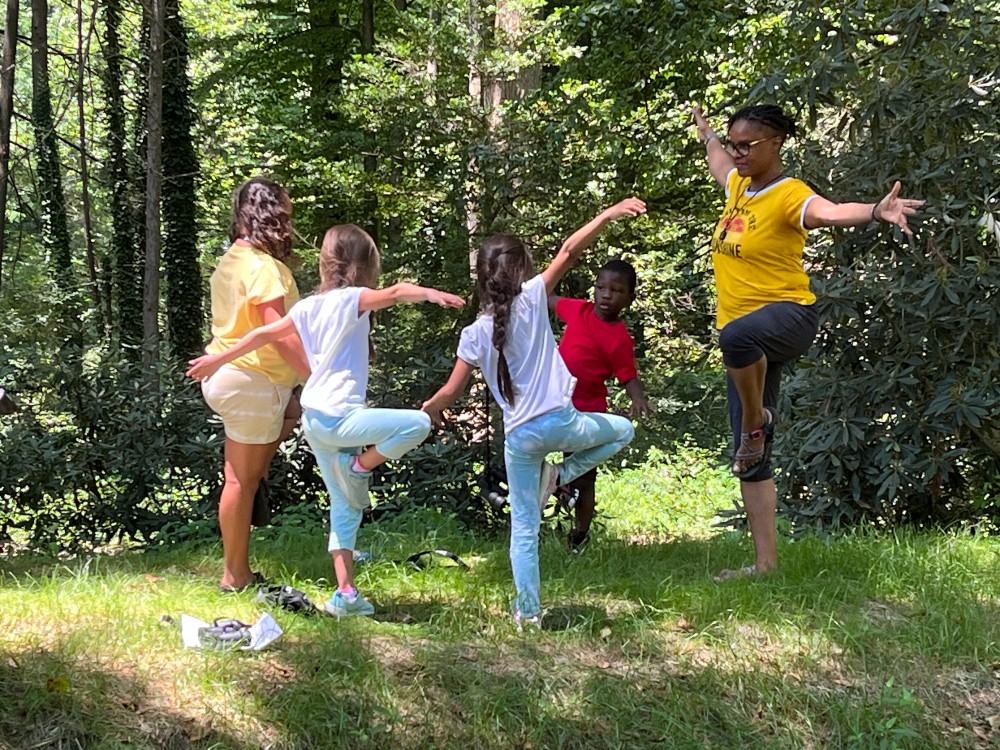
It was time to choose their spots among the trees and see what they would discover. It was hard to stay hushed and still with the excitement of looking for birds, but they did their best.
One girl observed that her friend looked close enough to touch, through her binoculars. A boy heard a woodpecker—one of his favorite sounds. “It just sounds so good!” he said. A girl saw a dark-colored bird and Pam helped her identify it as a catbird.
Pam says, “The transition to a quiet sit spot to observe birds and their movements was a very special and exciting experience. By being still, calm, and quiet, it didn’t take long before the birds were moving around us and allowing good looks very close up.”
At the end, each of the scholars had LaShanda’s full attention as they told her one thing that they witnessed: A white squirrel. A nest. A bird walking on the sidewalk. A robin with a worm.
One girl told LaShanda that she saw a bunch of towhees and a bunch of robins. “And you know how I got them to land there? I closed my eyes and I did this”—a still, standing pose.
“And they thought you were a tree!” LaShanda said, “See, the birds love you!”
